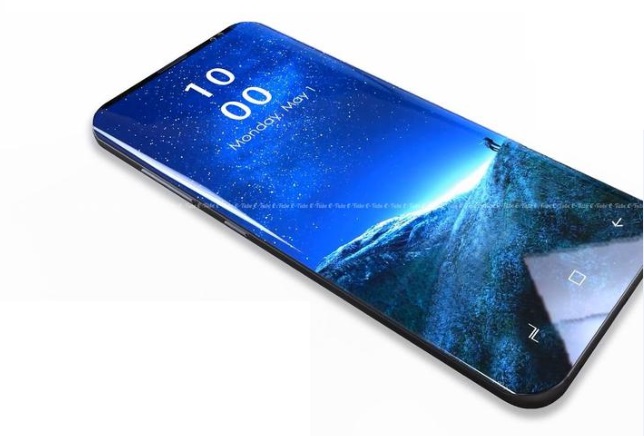Things have not been moving out well for Samsung in recent days. First, it was the Samsung Note 7 which was recalled following issues with its faulty batteries and now it’s the Samsung Galaxy S9 and S9+. After suffering losses worth billions of dollars, this South Korean giant company seems like it will yet again suffer another blow due to the latest saga involving their new flagship Smartphones.
According to reports, Samsung’s community page has been flocked with thousands if not millions of complaints from customers who claim that their devices (Galaxy S9/S9+) are encountering dead zones either on the upper or the lower parts of the screen. Even though this problem is quite disappointing, a majority of the Samsung users have said that they’ve received replacements either from the retailers or the carriers.
Now, there are several reasons which are likely to cause a dead zone to your Samsung Galaxy S9/S9+. One of them is dropping your device on a hard surface such as a floor which can either lead to a black screen view or result to screen unresponsiveness. The second issue is playing continuous games which are likely to slow your device or cause slow touchscreen responsiveness. The third reason that can result in touchscreen unresponsiveness is when your Smartphone is submerged in water for a long time. Finally, experts have suggested that a component known as a digitizer might be the fourth reason which can cause touchscreen unresponsiveness in most Galaxy S9/S9+ Smartphones. This component is responsible for detecting and registering touches on a touchscreen display.
Now, although most Samsung users have complained about the dead zone issue, there are other clever users who have managed to resolve this problem by adjusting the sensitivity of their Smartphones or by performing a factory reset. If you’re really wondering how you’re going to fix this dead zone nightmare on your new Samsung Galaxy S9/S9+, we will encourage you to read on as this post will provide you with a step-by-step procedure on how to fix your Galaxy S9/S9+ touch sensitivity issues.
Step 1: Perform a forced restart
The first step of troubleshooting your Samsung Galaxy S9 or S9+ is performing a forced restart which will help in solving minor issues. Since we’re not sure what might be the cause of a nonresponsive touchscreen, this step will be very imperative to begin with. After about 15 seconds, power on your Smartphone then check whether the touchscreen is responding.
Step 2: Reboot your Smartphone
The second step of fixing a nonresponsive touchscreen in your Samsung Galaxy S9 or S9+ is rebooting your phone in safe mode. Now, this step won’t fix the touch-sensitive problem, but it will disable all third-party apps temporarily. If the touchscreen problem is caused by an app, this method will detect that app leaving you with the solution. To do this, simply;
- Turn off your device.
- Long press the power key until the Samsung logo appears.
- Long press the volume down button until your Smartphone restarts.
- Before you release the volume down button, ensure that a Safe Mode notification appears on the bottom left corner of the screen.
- When your Samsung Smartphone is in Safe Mode, it’s time to find the app that’s causing the touch-sensitive problem. Go to settings, then apps, then preinstalled apps. From here, you only need to tap the app and uninstall it.
Did this step help? If not, then consider trying the next step below.
Step 3: Delete the Android System Cache
The next step of fixing the touch-sensitive problem with your Samsung Galaxy S9 or S9+ Smartphone is deleting the Android system cache. You see, to guarantee quality performance of your Smartphone, the OS (in this case Android) will create caches which will be responsible for the performance of various features and apps. One such feature that depends on caches is the display of your touchscreen. In case the touchscreen is unresponsive, you can decide to delete the caches and allow the Android system recreate new ones automatically. To do this, simply;
- Turn off your device.
- Long press the Volume Up key, the Bixby key and the Power button altogether.
- When you see the Samsung logo, release the three keys immediately and wait for about 20 seconds.
- Your Samsung Galaxy S9 or S9+ will display a message “installing system update”.
- Using the Volume Down key, navigate to wipe cache partition or wipe data then press the Power button to select.
- Navigate to the Yes option and select it to clear or wipe the cache process on your Samsung Galaxy S9 or S9+ Smartphone.
- Navigate to the Reboot System Now then click the Power button to restart your Android device.
Did this solve the touch-sensitive problem on your Samsung Smartphone? If not, you can try performing this last procedure.
Restore your Smartphone to factory setup
This step will involve resetting your Smartphone back to factory setup. During this operation, your Smartphone will delete all your personal information such as photos, videos, and important apps. Since this operation deletes the entire internal phone storage, it’s advisable that you backup any crucial data to avoid loss during the restart. To restore factory setup, simply;
Navigate to settings>>backup and restore>>factory data reset>>Reset Phone>>Erase Everything.
Wrap up
That’s it. We believe these four procedures will help to restore the touch-sensitive issues with your Samsung Galaxy S9 and Galaxy S9 Plus Smartphones. If these steps didn’t help, then it’s recommended that you consider returning your Samsung Galaxy S9 or S9+ to the carrier or the retail shop where you purchased it from for a replacement.

